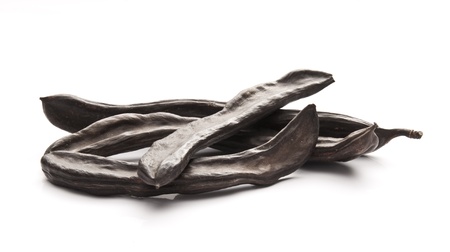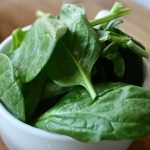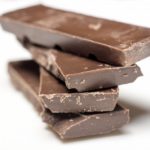
- Carob is an interesting alternative to chocolate offering many different health benefits.
- Approved for use in bars and baked goods.
Carob comes from the carob tree (Ceratonia siliqua) which is found throughout the Mediterranean. It produces large dark brown pea pod, that have a distinctive, slightly chocolatey aroma and which contain both pulp and seeds. Carob has been used for many years as a sweet and healthy substitute for chocolate. The Ancient Greeks and Romans recognised it for its special health benefits and purposely grew these trees near towns and cities. Commercial growing extends to India, Australia and cooler parts of South-East Asia.
The word ‘carat’ used to judge the weight and quality of diamonds comes from the use by Arab peoples as a way to measure gem size because they are so uniform and consistent in size. In the 19th-century, British chemists sold carob pods to singers who chewed the pods to maintain healthy vocal cords and soothe and cleanse their throat.
Other names include: Algarrobo, Caroube, Carouge, Ceratonia siliqua, Fève de Pythagore, Figuier d’Égypte, Garrofero, Locust Bean, Locust Bean Gum, Locust Pods, Pain de Saint Jean-Baptiste, St. John’s Bread, Sugar Pods.
Cultivation Of Carob
Each carob tree is a single sex, so it takes a male and female tree to produce carob pods. A single male tree can pollinate up to 20 female trees. After six or seven years, a carob tree is able to produce its pods.
Once a female tree is fertilized, it produces hundreds of pounds of dark brown pods filled with similar coloured pulp and tiny seeds. The pods are about 1/2 to 1 foot in length and about an inch wide. The pods are harvested in the Autumn.
Availability For Product Development
Purchase in the form of:-
- powder
- chips
- syrup
- extract
- dietary pills
Uses For Carob
The most common applications are as an ingredient in confectionary such as fudge, chocolate milkshakes, and biscuits, bars and brownies.
Carob tastes similar to chocolate and is a superb alternative because it contains:
- plenty of fibre (fiber)
- possesses a natural sweetness.
- antioxidants
- low amounts of fat and sugar
- no caffeine
- no gluten
To improve sweetness, add sugar or steviosides (stevia).
Health Properties
You can eat the pods when they are fresh or dried. We often add carob to our diet because we have noticed benefits like weight loss and a reduction in stomach complaints. It may offer satiety or fullness benefits.
Carob is a good source of vitamins and minerals including vitamin A, vitamin B2, vitamin B3 and vitamin B6. It also contains the minerals calcium, copper, potassium, manganese, magnesium, selenium and zinc.
Seed peel extracts contains a variety of alkaloids, tannins and flavonoids. These are all associated to a certain extent with various health benefits and have a high antioxidant potential. In a mouse model these seed peel extracts were found to modify mood and reduce anxiety (Lakkab et al., 2019). It is feasible that one day these extracts could become new natural antidepressants.
Products
A number of food products are available which use carob as the alternative to carob. We recommend searching out healthy, nutritious products by 9Bar which make great use of this ingredient.
References
Lakkab, I., El Hajaji, H., Lachkar, N., Lefter, R., Ciobica, A., El Bali, B., & Lachkar, M. (2019). Ceratonia siliqua L. seed peels: Phytochemical profile, antioxidant activity, and effect on mood disorders. Journal of Functional Foods, 54, pp. 457-465 (Article)


Leave a Reply